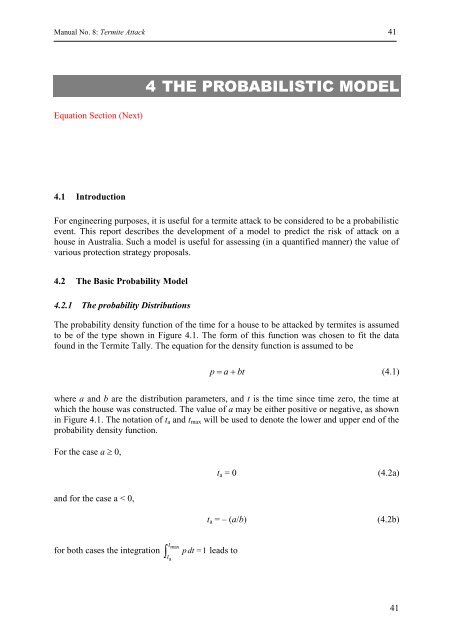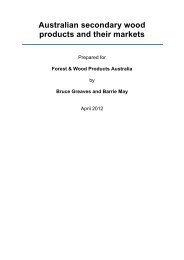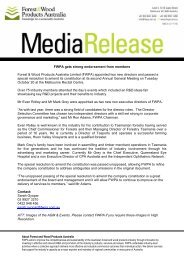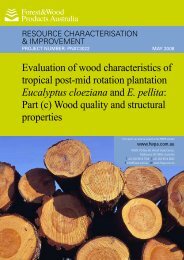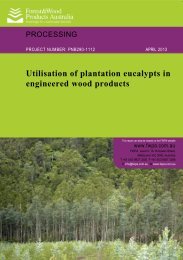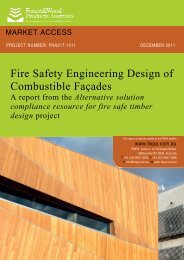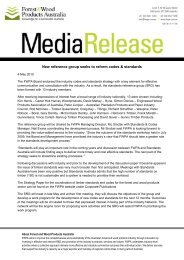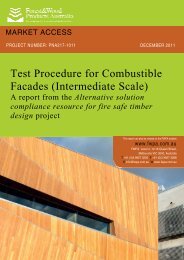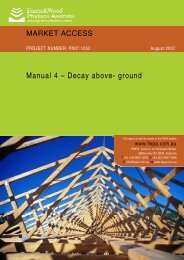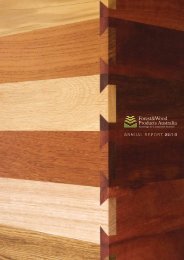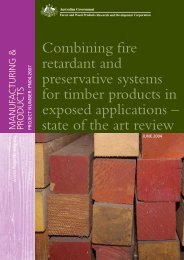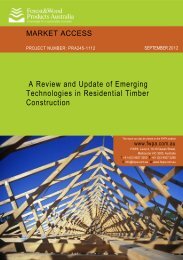MANUAL No - Forest and Wood Products Australia
MANUAL No - Forest and Wood Products Australia
MANUAL No - Forest and Wood Products Australia
Create successful ePaper yourself
Turn your PDF publications into a flip-book with our unique Google optimized e-Paper software.
Manual <strong>No</strong>. 8: Termite Attack 41<br />
Equation Section (Next)<br />
4.1 Introduction<br />
4 THE PROBABILISTIC MODEL<br />
For engineering purposes, it is useful for a termite attack to be considered to be a probabilistic<br />
event. This report describes the development of a model to predict the risk of attack on a<br />
house in <strong>Australia</strong>. Such a model is useful for assessing (in a quantified manner) the value of<br />
various protection strategy proposals.<br />
4.2 The Basic Probability Model<br />
4.2.1 The probability Distributions<br />
The probability density function of the time for a house to be attacked by termites is assumed<br />
to be of the type shown in Figure 4.1. The form of this function was chosen to fit the data<br />
found in the Termite Tally. The equation for the density function is assumed to be<br />
p a bt<br />
(4.1)<br />
where a <strong>and</strong> b are the distribution parameters, <strong>and</strong> t is the time since time zero, the time at<br />
which the house was constructed. The value of a may be either positive or negative, as shown<br />
in Figure 4.1. The notation of ta <strong>and</strong> tmax will be used to denote the lower <strong>and</strong> upper end of the<br />
probability density function.<br />
For the case a 0,<br />
<strong>and</strong> for the case a < 0,<br />
for both cases the integration max<br />
p dt =1 leads to<br />
t<br />
ta<br />
ta = 0 (4.2a)<br />
ta = – (a/b) (4.2b)<br />
41


